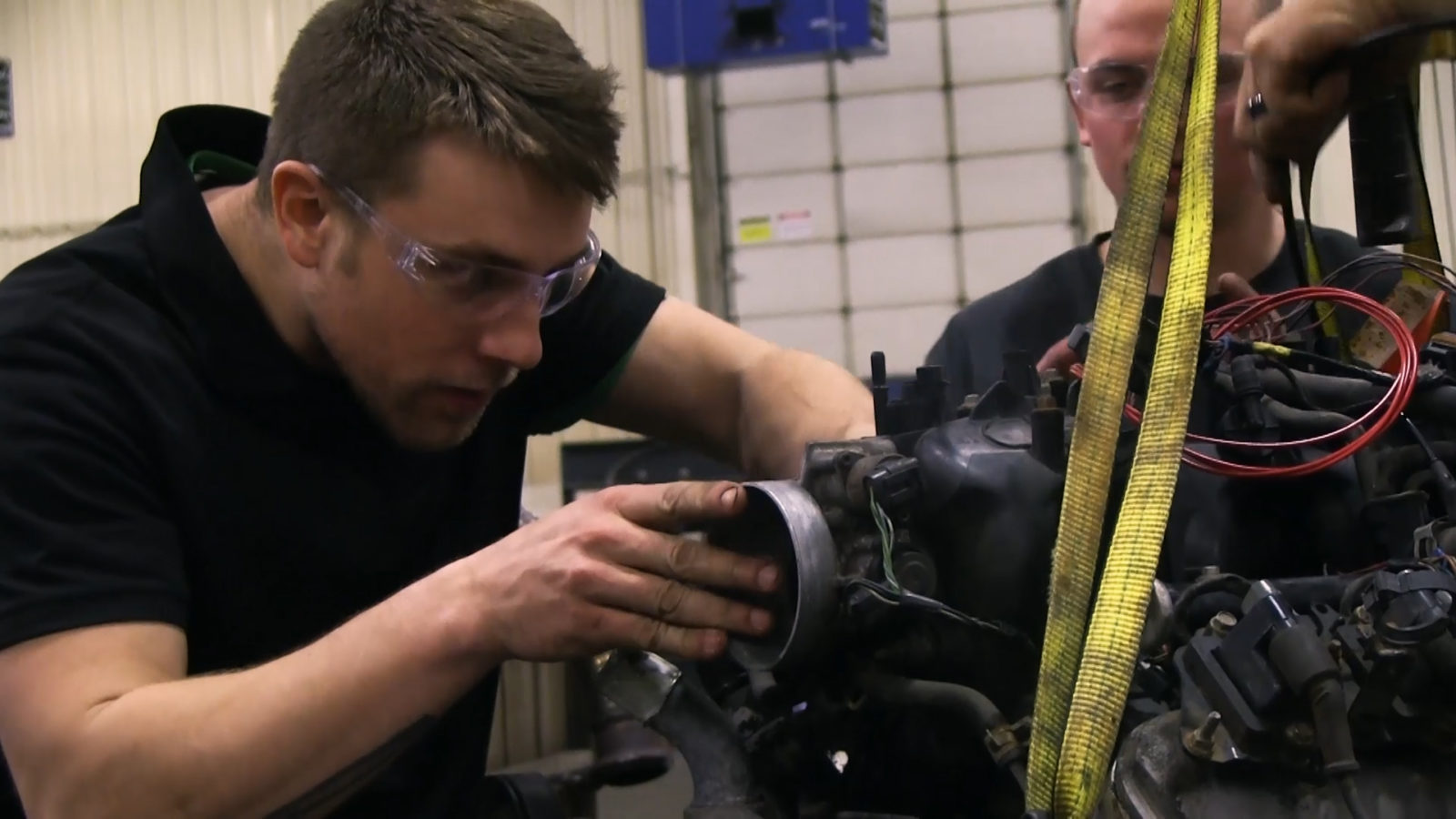Engine Build Series – April
Power Test has a group of employees that spend their lives in the garage building engines. So when the company acquired SuperFlow in 2017, they were itching to get into the test cell. There’s also a group of Power Test employees who see the garage as just a place to park their car. They don’t have any experience in the engine building world, but want to familiarize themselves with our dynamometers. But for many in both groups, their daily responsibilities at Power Test don’t afford them the opportunity to actually use the equipment they engineer, build, sell, or support every day.
VP of Engineering, John Miller, had an idea that would get everyone involved and ultimately lead to some R&D for the performance division.
Everybody in the company hears the dynos run on a regular basis. What they’re able to do here is actually grab the throttle, load the engine up, and run it as they’re dynoing an engine. They get to see what it’s all about and ask questions to understand what’s going on and why we’re doing it.
“I went to Craigslist and found a Chevy 5.3LS Engine for cheap[…] We cleaned it up, tore off the accessories and got it to the point where it began to look like an engine again.” Going forward, interested employees will meet once a month after hours to re-build the engine and tune it on the dyno. Those with an engine building background will lead the way and educate others with less experience. It’s a great way to gain insight into the industry and is a fantastic team-building opportunity for employees who don’t necessarily work closely on a regular basis.
Putting the Dyno to Use
“One of the goals is to do a lot of AB comparisons. What happens if we take off the stock exhaust manifolds and put on a set of headers or if I take out the stock cam and go to an aftermarket cam?” For an engine builder, these are things they’ve done a million times, but it would be new to a lot of employees. Each month, we’ll tackle a new challenge with the engine and see how it performs after the changes. It also services the broader goals of the company as we continue to innovate in our performance product line.
“We’re working on new software and new control techniques,” said Miller. “As part of the development, we need runtime on engines. What better way to get runtime than to have our people out in the shop, having fun, and learning from it?
Initially tuning will be done on a Stuska TrackMaster, but in coming months we’ll experiment on the SF-902S, the SF-PowerMark, and the SF-Black Widow to see how they all control with the same engine on them. It will give us a reference point on the intricacies of each system and will help us shape the direction of the performance dyno product line.
As importantly, though, the engine build project gives Power Test employees the chance to familiarize themselves with our equipment and the needs of the customers while making some serious power in the process.


